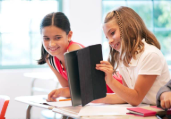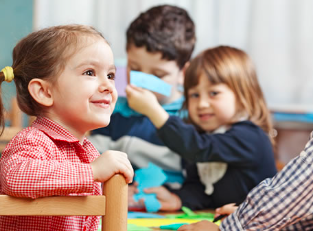Peer interaction plays a meaningful role in a child’s learning journey. When young learners engage with one another in a supportive environment, they not only build knowledge but also strengthen social and emotional skills that last a lifetime.
Why Peer Interaction Matters
Children often learn best when they feel connected to those around them. Engaging in group activities, collaborative play, or shared tasks helps children develop communication skills, problem-solving abilities, and a deeper understanding of new concepts. These moments allow them to express ideas, listen to others, and learn to take turns—all while exploring topics together.
Building Confidence Through Collaboration
When children work with peers, they gain confidence in their abilities. Explaining ideas to classmates, helping a friend with a puzzle, or participating in group discussions encourages them to take initiative and trust their own voices. Positive peer relationships can boost self-esteem and create a sense of belonging in the learning space.
Enhancing Understanding Through Dialogue
Talking through ideas with peers often leads to better understanding. A simple conversation about a storybook or a shared experiment can open new perspectives. Children benefit from hearing how others think and approach tasks. These exchanges promote curiosity and critical thinking in ways that individual work may not always achieve.
Encouraging Empathy and Social Growth
Peer interaction helps children build empathy. As they encounter different opinions and emotions, they learn to understand and respect others. These skills are essential not just in school but in life beyond the classroom. Kindness, cooperation, and patience are all nurtured through thoughtful peer experiences.
Creating Opportunities for Peer Learning
Educators and caregivers can encourage peer interaction by designing activities that require teamwork, setting up learning centers for shared exploration, or simply allowing space for children to talk and play together. Small group projects, partner reading, and creative games are just a few examples that support this approach.
Conclusion
Learning with peers is more than just fun—it’s powerful. When children connect, collaborate, and communicate with one another, they grow in remarkable ways. Peer interaction builds not only knowledge but also compassion, creativity, and confidence—laying a strong foundation for lifelong learning.


